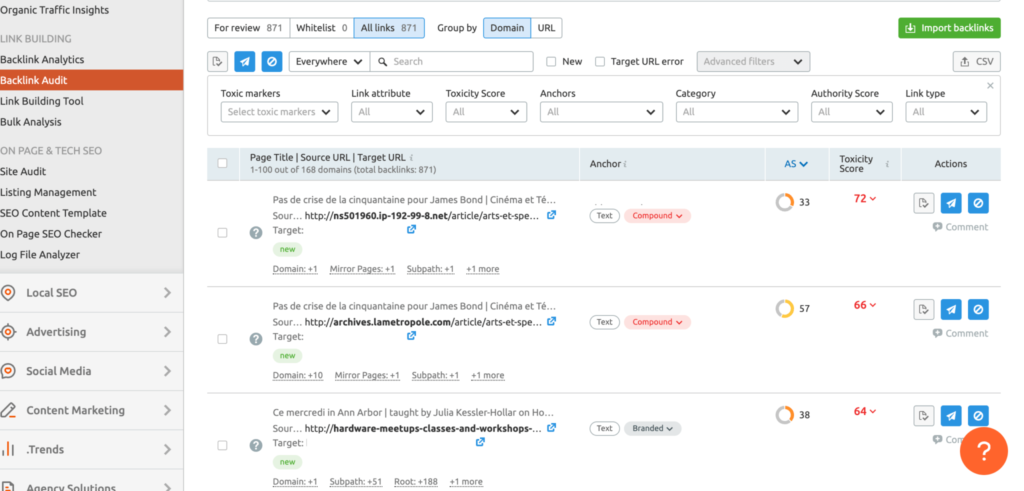Google penalties can make or break a website. If Google incurs a penalty to your website, it will prevent your site from being included in the search results. Your audience will no longer be able to find you and your ranking will be affected tremendously.
Background
Our client reached out to us to advise that his website suffered a Google Penalty. The client was not sure what was causing it. His website was an affiliate product review blog in the technology niche. The penalty was not visible in the Google Search Console, meaning that it wasn’t a manual penalty.
We started gathering more information. When we asked the client what he used for link building, he reported that he purchased cheap blog comments across a few freelancer platforms. He pointed those comments directly to the money site and has done nothing else in regards to SEO.
Analysis and Implementation
Soon after, we were given the project, and we quickly started to establish core facts to isolate the issue. The first thing we did was to analyze the side for both on-page and off-page SEO. We used Ahrefs and SEMrush for off-page SEO, while Cora was used for on-page SEO. Here are the findings we were able to uncover:
- A lot of spammy blog comments are linked to the website, as you can see from the image below.

- SEMrush’s toxic indicator identified that the backlink profile is dangerous
- The websites all of these comments were on had more than 1000 links per page
- Almost all of the links were using compound anchor texts and targeting money keywords. This is very suspicious to Google.
- The site was using a heavy WordPress theme, which caused the loading time to take up to 5 seconds. While this won’t necessarily affect the SEO ranking, it will cause visitors to bounce from the website more often, due to the extended loading times.
- The website scored a poor 41 on mobile and desktop after a PageSpeed Insights test.
- The on-page SEO generally did better than off-page. The titles and meta descriptions were written properly and the content quality was decent.
After assessing this information, here are the corrective actions we took, to help this website recover:
- We collected all of the toxic links and disavowed them from the Google Search Console. We also advised the client to no longer point these links towards the website. There were at least a thousand of them.
- We added a high-quality guest post to the website and used branding anchors.
- We switched the WordPress theme from Elementor to GeneratePress. This drastically decreased the loading speed.
- We installed WP-Rocket as an optimized caching solution for the website.
- We tested all of the changes to see the effects and improvements.
Aftermath and Useful Advice
After the preventative measures we have taken, the website slowly started to regain its lost rankings. It didn’t completely recover, but at least it is moving in the right direction.
The site optimization yielded amazing results, as you can see from the test performed after implementation.
This is how we successfully resolved the issue.
As a website owner, always remember: Quality over quantity. A few high-quality guest posts or PBN links will do things for your ranking that thousands of spammy links never could. Make it a habit to examine your backlink profile at least once a month, using SEMrush or Ahrefs. If you see any toxic links pointing to your website – disavow them as soon as possible.




